Understanding Oral Cancer Screening and Its Significance
Oral cancer remains a significant global health challenge, with hundreds of thousands of new cases diagnosed annually and a substantial mortality burden, especially in developing regions. Early detection through effective screening strategies is crucial to improve treatment outcomes and survival rates. This article examines the statistical data on detection rates and treatment outcomes from oral cancer screening programs, analyzes their effectiveness, explores diagnostic accuracy of screening methods, discusses advancements in technology, and evaluates epidemiological implications. It further reviews clinical studies and systematic reviews that shed light on the utility of various screening protocols, aiming to provide a comprehensive narrative on the current state and future directions of oral cancer screening.
Global Epidemiology of Oral Cancer and the Imperative for Early Detection
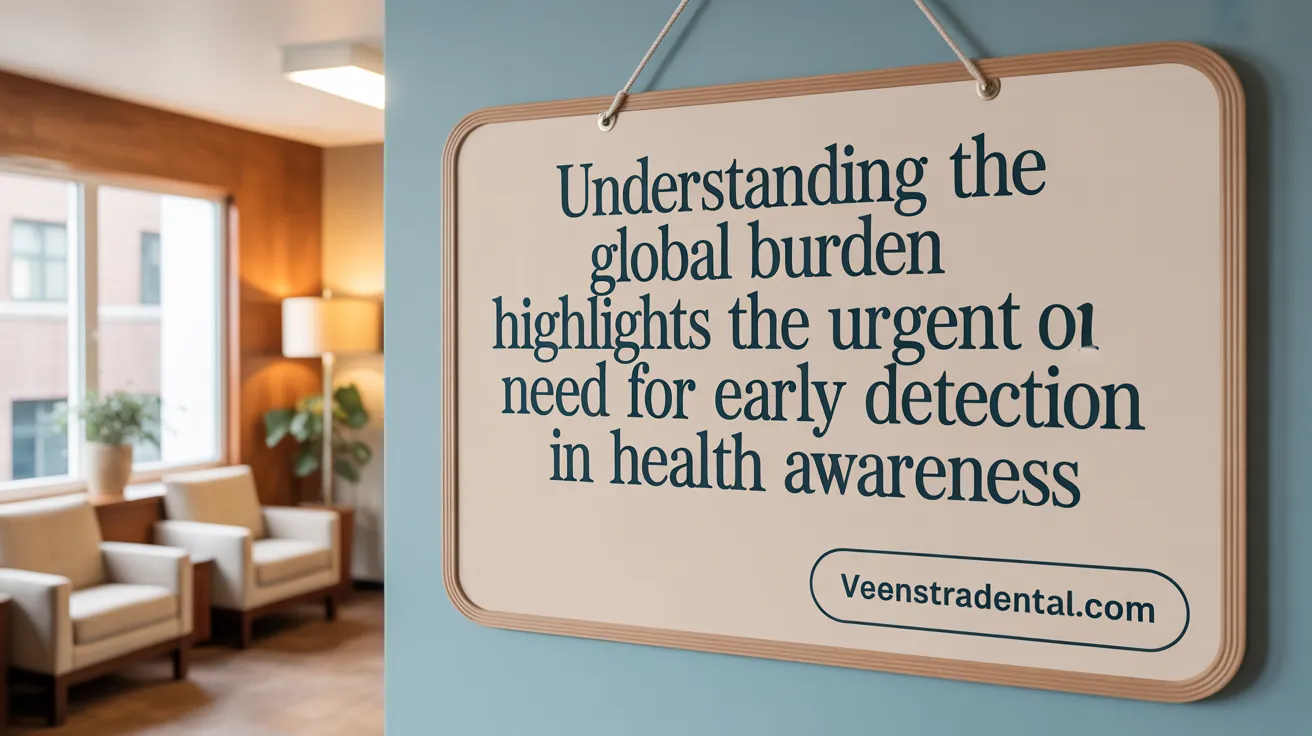
How do epidemiological data emphasize the importance of early detection and screening for oral cancer?
Oral cancer remains a major global health concern, with approximately 355,000 new cases and over 177,000 deaths each year. The highest incidence rates are found in developing regions, particularly in South Asia, where risk factors such as tobacco use, betel quid chewing, and heavy alcohol consumption are widely prevalent. Most cases, over 90%, are oral squamous cell carcinomas, which often remain asymptomatic during early stages.
Early detection plays a crucial role in improving patient outcomes. When diagnosed early, the five-year survival rate for oral cancer can reach 80% or higher, significantly better than the roughly 50-60% survival for late-stage diagnoses. However, most patients present with advanced disease, partly because early lesions are not easily noticeable and do not cause symptoms.
Epidemiological evidence calls for targeted screening programs, especially in high-risk groups, to identify cancers at an earlier, more treatable stage. These efforts can lead to shifts toward less aggressive treatments, better quality of life, and higher survival rates. Given the widespread impact and the asymptomatic nature of early-stage oral cancer, accessible, simple, and cost-effective screening strategies are vital to reduce the disease burden and improve prognosis worldwide.
Detection Rates and Treatment Outcomes in Oral Cancer Screening
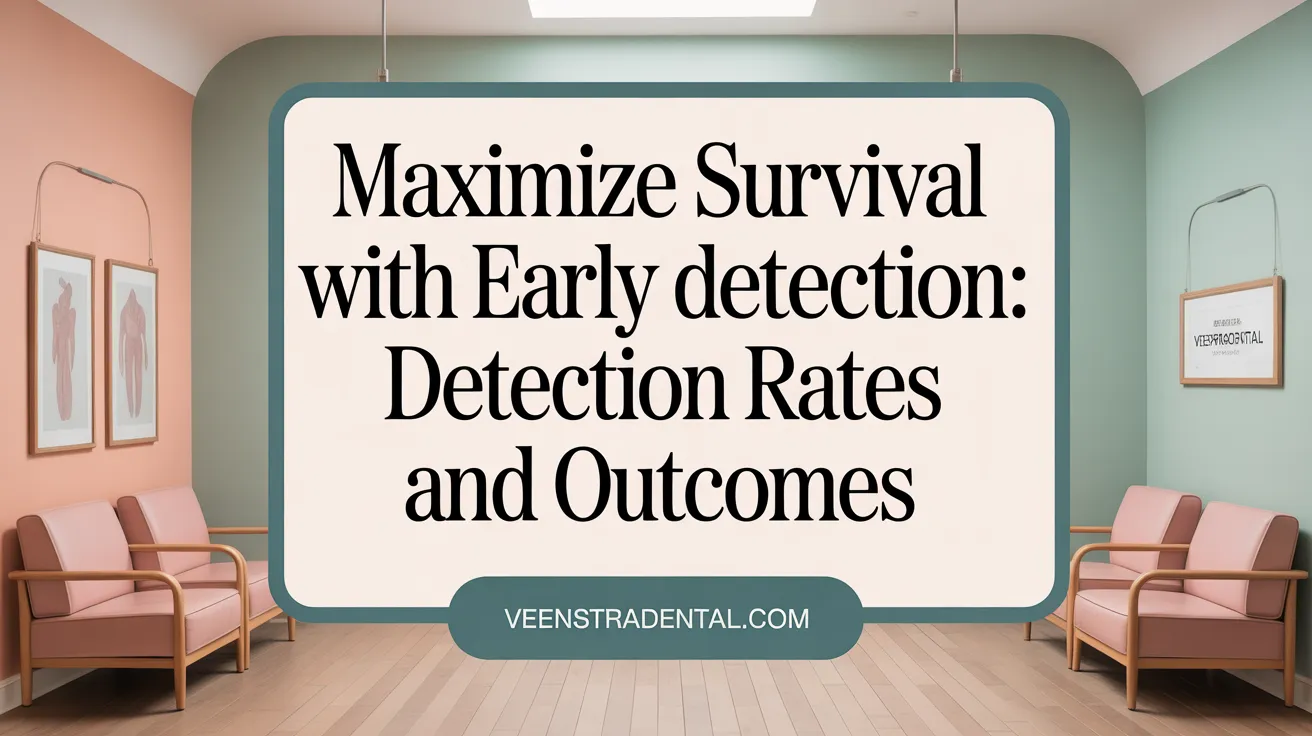
What are the detection rates and treatment outcomes associated with oral cancer screening?
Oral cancer screening plays a vital role in detecting early and potentially malignant lesions, which significantly impacts treatment success and patient survival. Detection rates for such lesions vary widely across studies, ranging from as low as 0.14% to as high as 39.5% for potentially malignant findings. The detection of actual oral cancers during screening ranges from 0% to 9.1%, depending on the population and method used.
The predominant screening approach—visual oral examination (VOE)—has demonstrated promising accuracy, with a combined sensitivity around 84% and a specificity near 94%. This high level of accuracy facilitates early diagnosis of cancer, often before symptoms develop, leading to more effective and less invasive treatment options.
When oral cancers are identified early, especially at an initial stage, treatment outcomes improve markedly. Early-stage cancers can have survival rates as high as 85%, compared to much lower survival in late-stage diagnoses. Evidence from large studies supports this, with some showing approximately a 34% reduction in mortality among high-risk individuals who undergo systematic screening. Regular screening, particularly in populations with high risk factors like tobacco and alcohol use, enhances the chances of catching cancer early.
Moreover, screening contributes to better treatment efficacy and prognosis by enabling clinicians to intervene at a localized stage, reducing the need for extensive surgeries or aggressive therapies. Consequently, patients benefit from improved quality of life, higher survival probabilities, and decreased mortality rates.
In summary, oral cancer screening, primarily through visual examination, significantly boosts detection of early and precancerous lesions, consequently leading to more favorable treatment outcomes and survival prospects, especially when conducted consistently within high-risk groups.
Effectiveness of Oral Cancer Screening Programs on Early Detection and Survival
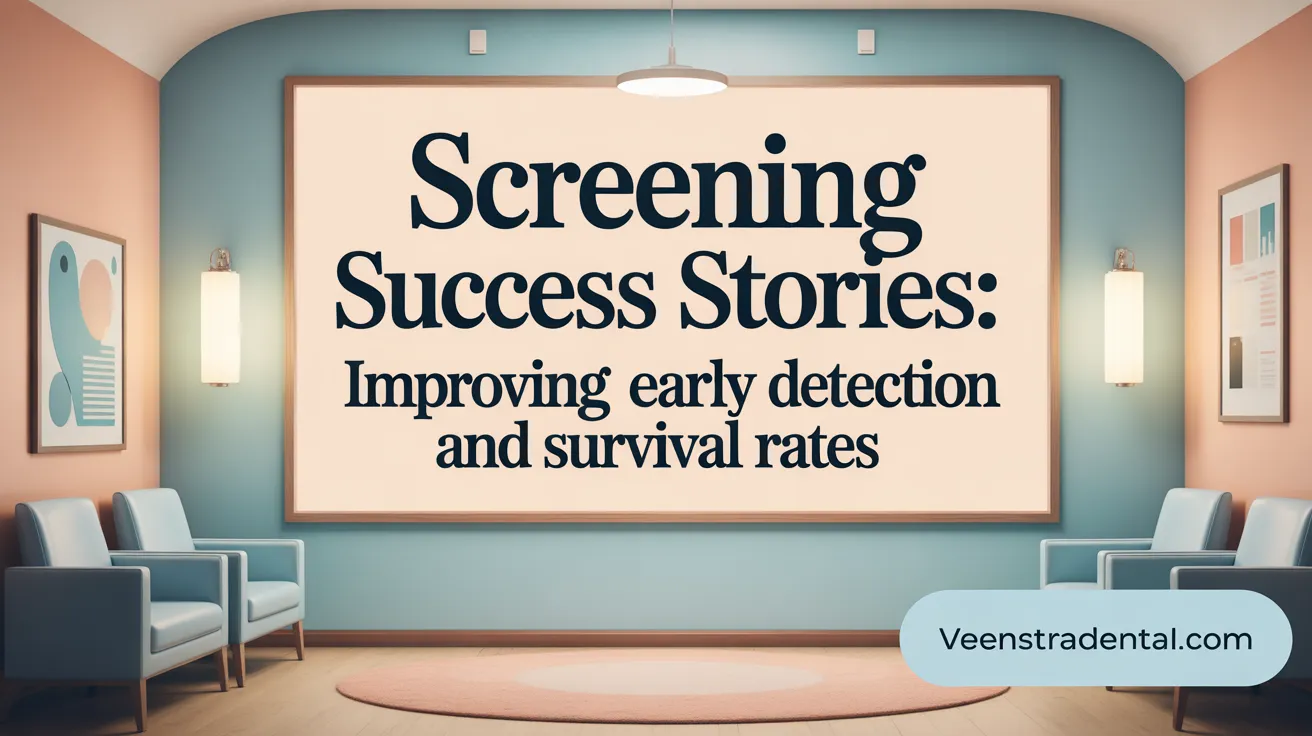
How effective are oral cancer screening programs in improving early detection and patient survival rates?
Oral cancer screening programs, primarily based on visual examination and palpation, are crucial tools in identifying early-stage disease. These methods are straightforward, cost-effective, and widely used in both high- and low-resource settings. Evidence from multiple programs indicates that repeated screening over several years substantially increases the chances of detecting early lesions, which are associated with better treatment outcomes.
Research from Taiwan shows that a national screening program significantly shifted the stage distribution toward earlier tumor stages, with a 15% reduction in late-stage diagnoses among screened individuals. Such early detection translates into higher survival rates; early-stage oral cancer can have an 85% five-year survival rate, compared to approximately 50% for late-stage diagnoses. Moreover, the Taiwanese program observed that patients participating in multiple screening rounds had a lower hazard of death, highlighting the importance of ongoing screening.
Meta-analyses reinforce these findings, demonstrating that targeted screening in high-risk populations—such as tobacco and betel quid users—reduces oral cancer mortality by about 26-27%. Similar positive outcomes are reported from India’s Kerala trial, where four rounds of screening resulted in an 81% reduction in mortality over a decade. These results underline that consistent, repeated screening efforts not only detect cancers earlier but also contribute to meaningful improvements in survival rates.
In summary, regular and targeted oral cancer screening effectively increases early detection rates and enhances survival. Sustained screening programs, especially those that engage high-risk groups, are essential strategies for reducing the burden of oral cancer worldwide.
Diagnostic Accuracy of Oral Cancer Detection Methods
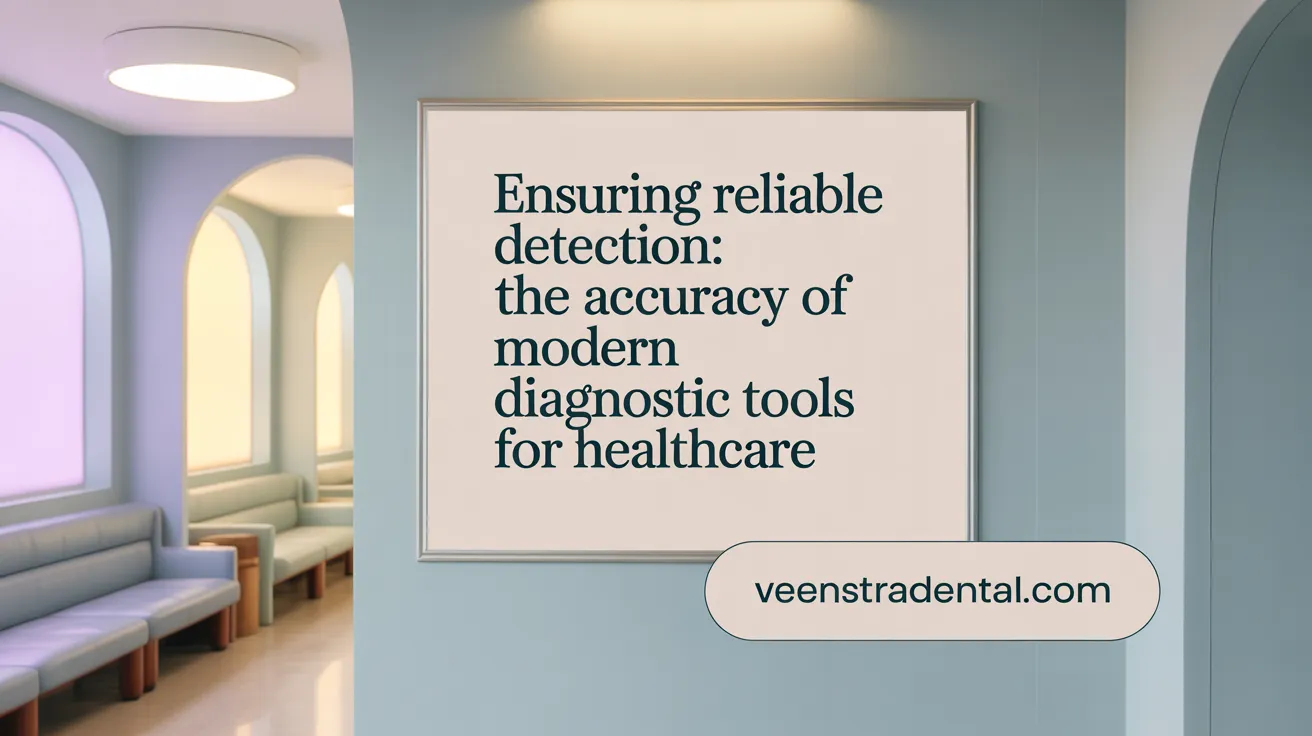
What evidence and research findings support the diagnostic accuracy of oral cancer detection methods?
A substantial body of research indicates that both traditional and innovative diagnostic tools for oral cancer are highly accurate. Visual oral examinations (VOE), the primary screening approach, have demonstrated pooled sensitivities of about 88.8% and specificities around 91.9%. This means that a well-conducted visual inspection can reliably identify suspicious lesions while minimizing false positives.
Adjunctive screening tools further enhance diagnostic precision. For example, toluidine blue staining shows high sensitivity, making it effective in highlighting potentially malignant lesions. Similarly, devices like VELscope, which utilize tissue autofluorescence, achieve sensitivities close to 97% in some studies, though their specificity varies—sometimes around 58%. These tools help detect early tissue changes that are not visibly apparent.
Advances in imaging techniques, such as optical coherence tomography (OCT) and fluorescence imaging, have been promising. OCT offers detailed cross-sectional images of oral tissues with sensitivities nearing 92.3%, assisting clinicians in early diagnosis. Fluorescence imaging techniques exploit differences in tissue fluorescence to distinguish abnormal from healthy tissues, contributing to early detection with good performance metrics.
Moreover, the integration of artificial intelligence (AI) and machine learning models is transforming screening practices. These systems analyze images, risk factors, and lesion characteristics, often achieving overall accuracy and sensitivity above 90%. AI-driven tools are particularly valuable in resource-limited settings or remote areas, where specialist expertise may be lacking.
Emerging molecular diagnostics, such as saliva-based biomarker analysis, also show high potential. Markers like TP53 mutations, miRNAs (e.g., miR-21, miR-31), and proteins like matrix metalloproteinases (MMP-2 and MMP-9) have been linked to oral cancer presence and prognosis. Although these are still under validation, initial findings support their future role in highly accurate, non-invasive screening.
In summary, systematic evaluation of current evidence affirms that modern oral cancer detection methods—ranging from visual exams to AI and molecular diagnostics—deliver high diagnostic accuracy. Continued research and technological development are expected to further improve early detection, ultimately enhancing patient outcomes.
Impact of Oral Cancer Screening on Diagnosis Stages, Treatment Delays, and Mortality
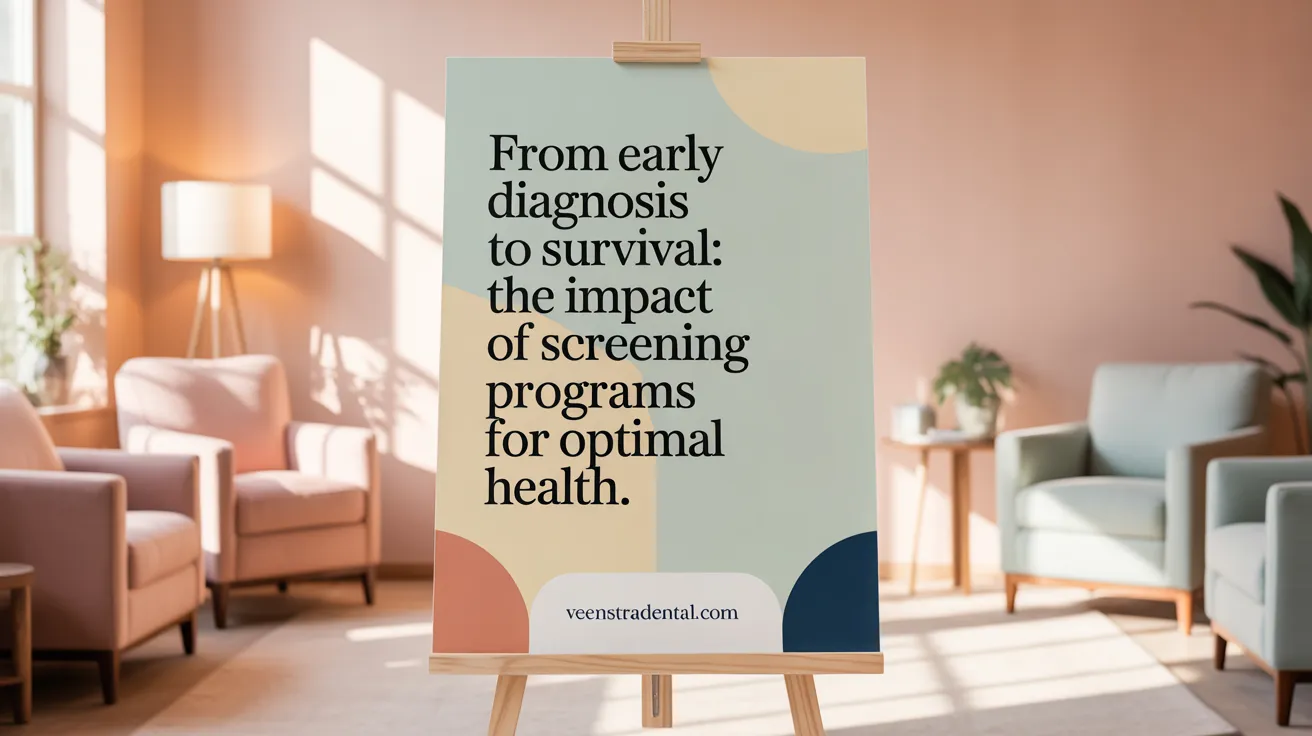
How does oral cancer screening influence the stages at diagnosis, treatment delays, and patient survival?
Screening programs for oral cancer have demonstrated a positive effect on identifying cancers at earlier stages. This shift towards earlier diagnosis is crucial because early-stage oral cancers are more treatable and associated with higher survival rates. For instance, evidence from Taiwan's nationwide screening initiative shows that individuals identified through screening were less likely to be diagnosed at late stages, with an estimated 15% reduction in late-stage diagnoses.
The benefit of detecting cancers earlier translates into notable survival improvements. Patients who undergo regular screening are more likely to receive treatment when the disease is at a less advanced, more manageable stage. Studies report a roughly 26% decrease in mortality among high-risk populations who participate in screening, emphasizing the importance of early detection.
However, screening also presents challenges, particularly regarding treatment initiation. Data suggest that screening can sometimes be associated with increased treatment delays, possibly due to logistical issues such as referral bottlenecks and limited healthcare resources. These delays can offset some benefits of early detection if not managed properly.
Despite these potential delays, patients who participate in repeated screening cycles tend to have better outcomes. Repeated screening over several years consistently shows a survival advantage, with approximately a 6% reduction in the hazard of death.
Overall, while oral cancer screening effectively shifts diagnosis to earlier, more treatable phases and reduces mortality, it is essential to address barriers such as treatment delays. Ensuring prompt referral and treatment following screening is key to maximizing survival benefits and reducing the burden of advanced disease.
Role of General Dentists and Primary Health Workers in Oral Cancer Screening
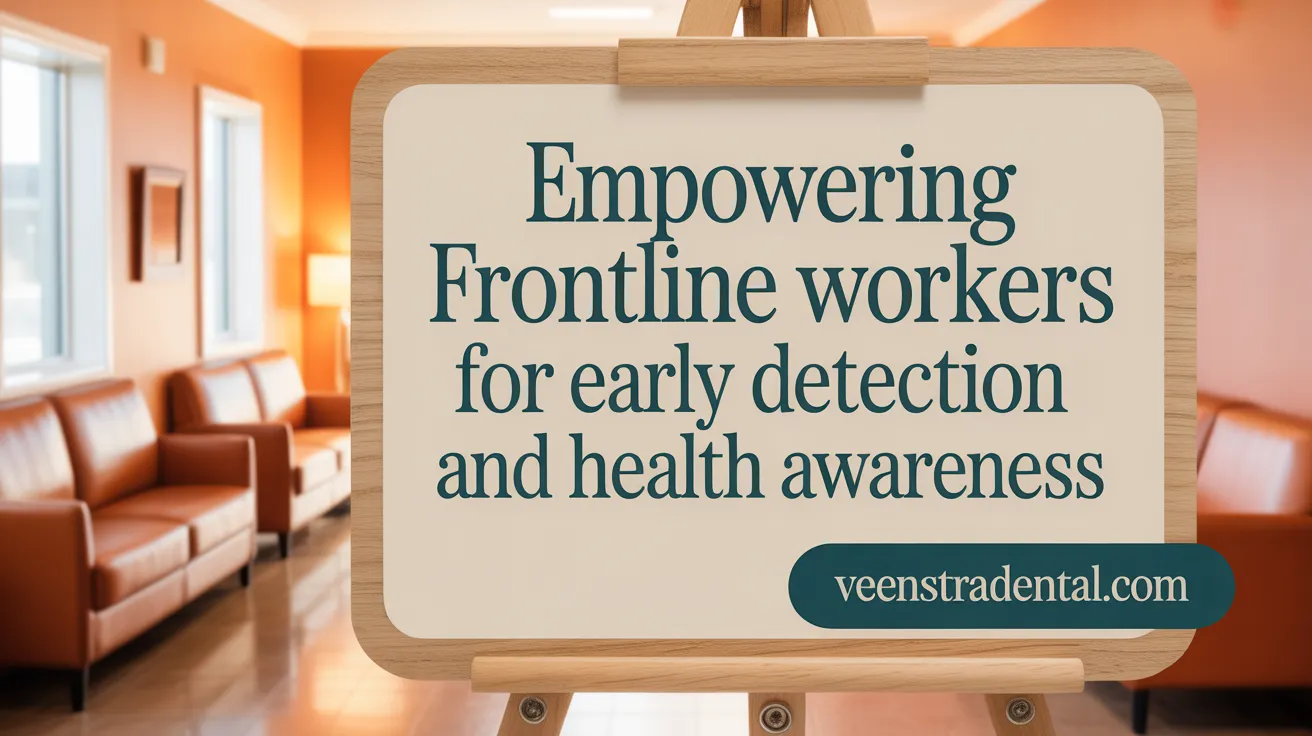
Dentists’ involvement and training deficiencies
General dentists are essential players in the early detection of oral cancer due to their routine access to patients’ oral cavities. However, many face gaps in training related to identifying early signs of potentially malignant lesions. These deficiencies can lead to missed opportunities for early diagnosis, as some oral cancers remain asymptomatic in initial stages.
Strengthening their skills through targeted education and regular updates on screening techniques can enhance their effectiveness. Improved training ensures that dentists are confident in performing thorough visual examinations and recognizing high-risk lesions needing further investigation.
Effectiveness of trained primary health workers in low-resource settings
In many low-resource environments, access to specialized dental services is limited. Here, training primary health workers, including community health workers and primary care providers, becomes crucial. These frontline workers, with adequate training, have demonstrated effectiveness in conducting visual oral examinations, especially in high-risk communities.
Studies indicate that when primary health staff are trained in simple, cost-effective screening techniques, they can identify suspicious lesions and refer patients for further evaluation. This task-shifting approach makes screening more scalable and sustainable in settings with limited dental practitioners.
Importance of education and awareness for early detection
Raising awareness among both healthcare providers and the public is vital for successful screening programs. Educated providers are better equipped to conduct examinations accurately, while an informed community is more likely to participate in regular screening.
Educational campaigns focused on risk factors such as tobacco and alcohol use, as well as symptoms of early lesions, encourage individuals to seek timely dental or medical assessments. Early detection markedly improves treatment outcomes and survival chances. Therefore, continuous education, both at professional and community levels, is essential for enhancing the impact of oral cancer screening efforts.
Cost-Effectiveness of Oral Cancer Screening Approaches
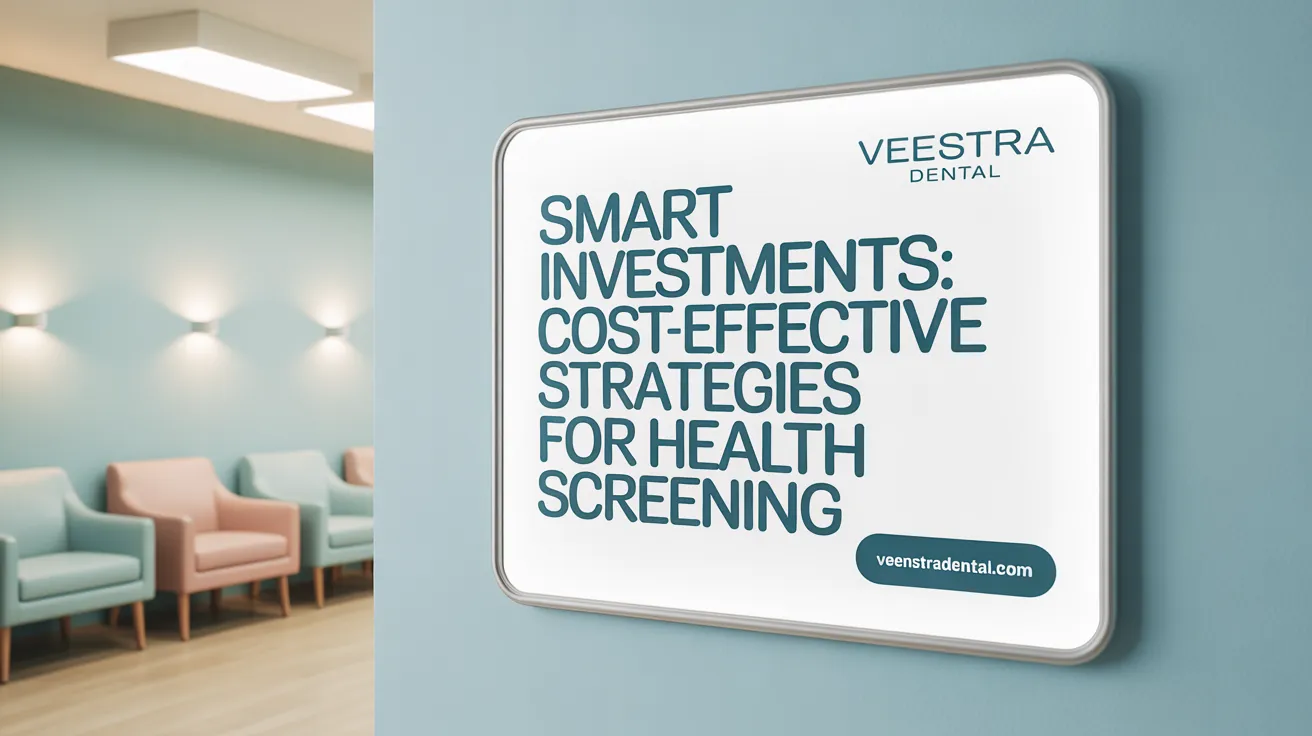
What do economic evaluations reveal about routine population-based screening?
Research on the cost-effectiveness of screening all populations for oral cancer generally suggests that it may not be a justifiable investment globally. Large-scale analyses indicate that widespread screening programs require significant resources and often yield limited reductions in mortality. The high costs associated with broad screening initiatives can outweigh the benefits when considering the overall impact on healthcare budgets and resource allocation.
Is targeted screening for high-risk groups more feasible?
Targeted screening focuses on individuals with elevated risk factors, such as tobacco and alcohol users, betel quid chewers, and those with HPV infections. Studies show that focusing on these high-risk groups enhances detection rates of precancerous lesions and early-stage cancers. This approach tends to be more cost-effective, as it concentrates resources on populations with the greatest likelihood of benefit, leading to earlier diagnosis and better survival outcomes.
Can low- and middle-income countries implement cost-effective programs?
In resource-constrained settings, implementing population-wide screening programs is often impractical. Instead, reliance on trained primary care workers or dentists for targeted screening, combined with affordable visual examination methods, provides a viable alternative. Technologies like AI and teledentistry are emerging to aid in screening efforts, especially in underserved areas. These strategies aim to maximize early detection while minimizing costs, making selective screening a practical approach for low- and middle-income countries.
| Screening Approach | Cost-Effectiveness | Main Advantages | Challenges |
|---|---|---|---|
| Population-based | Limited | Broad coverage, potential for early detection | High costs, resource-intensive |
| Targeted high-risk | More favorable | Focused resources, increased detection rate | Identifying high-risk individuals, ensuring access |
| Low-resource adaptations | Promising | Feasible in low-resource settings, scalable | Limited technology, training needs |
Overall, concentrating efforts on high-risk populations and optimizing resource use through innovative tools and proper training enhances the value of screening programs while addressing economic constraints.
Technological Innovations Enhancing Oral Cancer Screening
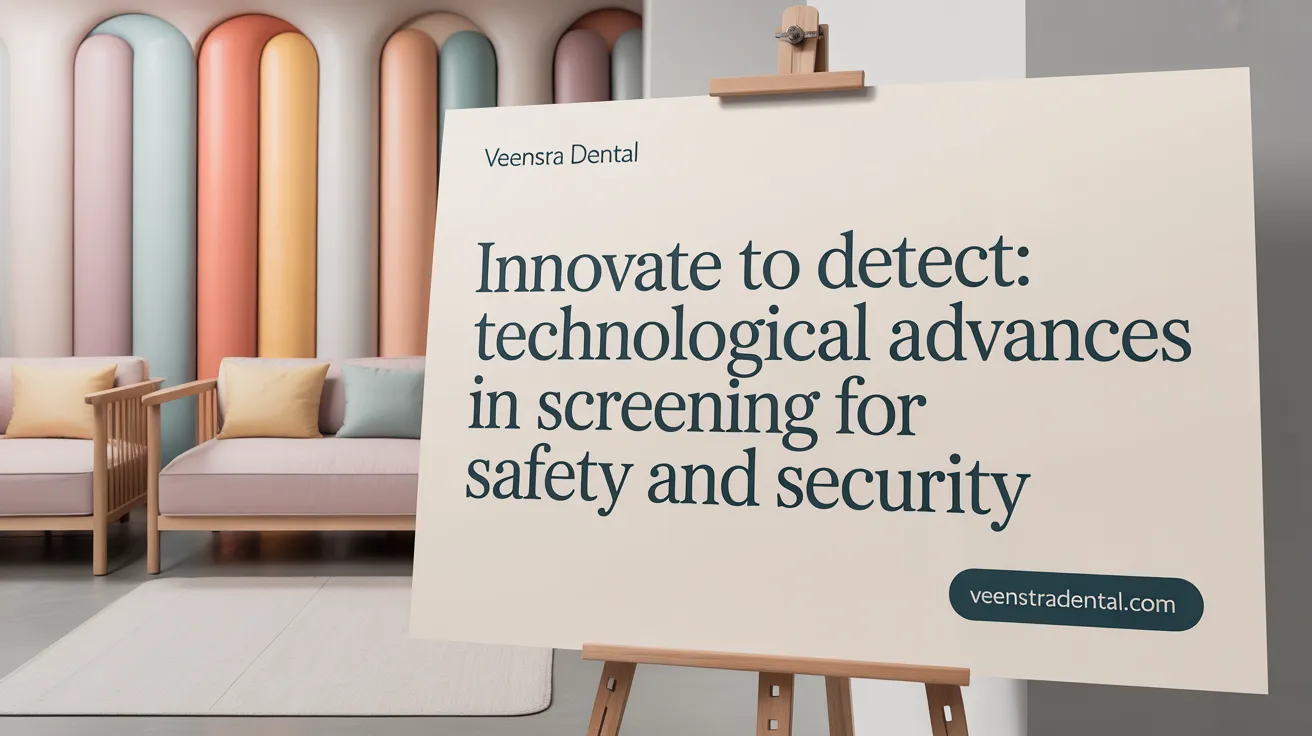
What recent technological advancements and diagnostic tools have improved oral cancer screening?
Recent technological progress has significantly transformed the landscape of oral cancer detection. Traditional visual examination, while simple and cost-effective, has limitations in sensitivity and specificity, prompting researchers and clinicians to explore advanced diagnostic tools that promise earlier and more accurate identification of lesions.
One prominent development involves optical imaging modalities such as Optical Coherence Tomography (OCT) and fluorescence imaging techniques. OCT provides high-resolution cross-sectional images of the oral mucosa, enabling clinicians to detect precancerous changes and early tumors with a sensitivity of over 92%. Fluorescence-based methods, including autofluorescence and narrow-band imaging, enhance visualization of abnormal tissue by highlighting metabolic and structural differences, often with sensitivities around 91%. Devices like VELscope and the use of toluidine blue staining serve as adjuncts to visualize suspicious areas more clearly.
Artificial Intelligence (AI) and machine learning have become game-changers in diagnosis. By analyzing digital images and patient data, AI algorithms can predict cancer risk, assist in lesion classification, and improve diagnostic accuracy. Some models demonstrate an overall accuracy of more than 80-90% in risk assessment and detection, facilitating personalized screening approaches.
Another exciting area involves telemedicine and teledentistry platforms. These digital health tools enable remote screening services, allowing health professionals to assess oral lesions via images sent from underserved or remote locations. This expansion of access can lead to earlier detection in populations with limited healthcare coverage.
Saliva-based diagnostics represent a promising non-invasive approach under active research. Biomarkers such as circulating tumor DNA, proteins like matrix metalloproteinases (MMP-2 and MMP-9), and microRNAs are being evaluated for their potential to detect early cancer and monitor disease progression. Although still under validation, these methods could revolutionize screening by providing rapid, easy, and painless testing options.
Collectively, these technological advances are paving the way for more precise, accessible, and early detection of oral cancer. With continued refinement and validation, such tools hold the promise of significantly reducing morbidity and mortality associated with this disease, enabling personalized treatment and improving patient care outcomes.
Epidemiological Insights from Large Oral Cancer Screening Trials
What do clinical studies and systematic reviews reveal about detection rates, survival, and mortality associated with oral cancer screening?
Large-scale clinical trials and systematic reviews provide important but nuanced insights into the effectiveness of oral cancer screening programs. The Kerala Oral Cancer Screening Trial, a significant randomized controlled study, involved multiple screening rounds over several years with thousands of participants. Remarkably, it reported an 81% reduction in mortality among high-risk individuals who underwent repeated screenings, highlighting the potential benefits of ongoing surveillance. However, in the broader population, the trial did not find a statistically significant difference in overall oral cancer mortality when comparing screened groups to controls.
Observational studies from countries like Cuba and Taiwan offer additional perspectives. Cuba’s program, conducted between 1982 and 1990, examined over 10 million people and resulted in early detection shifts — more cases diagnosed at earlier stages — but did not conclusively reduce overall mortality. Conversely, Taiwan’s national screening initiative (2004–2009), which targeted high-risk adults, demonstrated a 26% reduction in death rates and a shift in diagnoses toward earlier, more treatable stages.
Meta-analyses of existing research consistently suggest that targeted screening of high-risk populations—primarily tobacco and alcohol users—can lead to better early detection rates and modest mortality benefits. These benefits often correlate with increased diagnosis of less advanced cancers and improved survival prospects.
Nevertheless, absolute detection rates for oral cancer lesions vary significantly in different studies, ranging from approximately 0.14% to 39.5% for potentially malignant lesions, and 0% to 9.1% for confirmed cancers. Sensitivity of visual screening techniques spans from about 60% to nearly 98%, with specificities generally above 80%, indicating that visual examination alone can be reasonably accurate but is not infallible.
Despite promising findings in specific settings, many challenges remain. Variability in resource availability, practitioner training, and healthcare infrastructure affects outcomes across different regions. Furthermore, no large-scale studies currently validate adjunctive technologies like fluorescence imaging or salivary biomarker testing as standard screening tools.
In summary, while evidence from dedicated trials and systematic reviews indicates a trend toward detection of early, more treatable cancers and some reduction in mortality—especially in high-risk groups—definitive proof requires further high-quality research. Consistent application of risk-based screening strategies, coupled with timely treatment, is essential to realizing the potential benefits of oral cancer screening programs globally.
Screening Participation, Adherence, and Its Effect on Outcomes
How does repeated screening influence oral cancer survival rates?
Repeated screening plays a significant role in improving survival rates for oral cancer patients. Studies have shown that individuals participating in multiple rounds of screening over several years tend to be diagnosed at earlier stages of the disease. This early detection allows for more effective treatment options and increases the chances of survival.
Data indicates that those who undergo screening more than once are less likely to be diagnosed at advanced stages, leading to better prognosis. In fact, survival rates can increase to around 85% with regular screening, compared to approximately 60% with late-stage diagnosis.
What are the challenges in maintaining high participation in oral cancer screening?
Despite the benefits, maintaining high participation rates in screening programs remains challenging. Factors such as lack of awareness, fear of diagnosis, cultural beliefs, and limited access to healthcare services can discourage individuals from attending screenings.
Resource constraints, especially in low-resource settings, impede the implementation of widespread programs. Additionally, logistical issues like scheduling conflicts and transportation problems can limit continuity of participation.
How do societal and behavioral factors influence adherence to screening programs?
Societal and behavioral factors significantly impact adherence to oral cancer screening. Societies with low health literacy may have misconceptions about oral cancer risks or the importance of screening.
Cultural stigmas and fear of treatment outcomes can deter individuals from seeking screening services. Socioeconomic status also plays a role; those with financial hardships might prioritize other necessities over health checks.
Interventions aimed at increasing awareness, community engagement, and education are essential to improve participation. Tailoring programs to address specific cultural attitudes and beliefs can also enhance adherence.
| Aspect | Influence | Challenges | Solutions |
|---|---|---|---|
| Repeated Screening | Improves early detection and survival | Maintaining participation over years | Community education, follow-up reminders |
| Participation Barriers | Low awareness, fear, access issues | Cultural stigma, resource gaps | Mobile clinics, outreach programs |
| Societal Factors | Socioeconomic status, health literacy | Misinformation, stigma | Culturally sensitive education, incentives |
Understanding these factors is crucial for designing effective screening programs that can genuinely reduce oral cancer mortality through sustained participation.
Screening Positivity Rates and Variability Among Programs
Range of positive detection rates in volume screenings
Across various national and regional oral cancer screening programs, the rates at which individuals tested positive for potentially malignant lesions or cancer vary widely. Reported detection rates for potentially malignant lesions range from as low as 0.14% up to 39.5%, while oral cancer detection rates have been documented between 0% and 9.1%. This variation reflects differences in population risk profiles, screening methods, and the criteria used to define positive cases.
Variations between initial and subsequent screening rounds
Screening efforts often involve multiple rounds over several years. Studies show that initial screening positivity rates tend to be higher, typically ranging from 0.24% to 18%. During subsequent screenings, these rates usually decrease to between 0.55% and 14.8%. Repeated screenings tend to identify more early-stage lesions and potentially malignant conditions, which can lead to earlier intervention and better outcomes.
Factors influencing positivity rates
Several factors influence the positivity rates in oral cancer screening programs. These include the risk profile of the population being screened—particularly tobacco and alcohol use, betel quid chewing, and HPV infection. The screening method employed also plays a significant role; visual examination alone has sensitivities reported between 59% to 98.9%, with high specificity above 80%. The quality of examiner training, use of adjunct technologies like toluidine blue, autofluorescence, or AI-based tools, and the criteria for defining a positive finding all impact detection rates.
Understanding these variations helps in designing more targeted and efficient screening programs. Tailoring interventions to high-risk groups and standardizing screening protocols can improve detection accuracy and optimize resource utilization.
Barriers to Effective Oral Cancer Screening Implementation
Resource limitations and healthcare infrastructure challenges
Implementing widespread oral cancer screening faces significant hurdles due to limited healthcare resources and infrastructure. Many regions, especially in developing countries, lack sufficient clinics, dental professionals, and diagnostic tools necessary for large-scale screening programs. This scarcity hampers timely detection and treatment of precancerous lesions.
Training gaps among general dentists and health workers
A major obstacle is the insufficient training of general dentists and primary health care workers. While visual examination is simple and cost-effective, many practitioners lack the expertise to accurately identify early signs of oral cancer or potentially malignant lesions. Enhancing training programs and skill development is crucial to improve detection rates.
Referral system inefficiencies and treatment delays
Even when screening identifies suspicious lesions, delays often occur due to weak referral systems and treatment bottlenecks. Patients may face long waiting periods or logistical issues in accessing specialized care, which can result in disease progression before intervention. Streamlining referral pathways and increasing treatment capacity are vital steps.
Public awareness and stigma issues
Low awareness about oral cancer risk factors and early symptoms reduces participation in screening programs. Cultural stigma and fear of diagnosis further discourage individuals from seeking screening or medical help. Public health campaigns aimed at education and destigmatization are essential to improve community engagement.
| Barrier Type | Description | Impact on Screening Efficiency |
|---|---|---|
| Limited Resources | Insufficient clinics, tools, workforce | Reduced screening coverage |
| Training Gaps | Lack of skilled personnel | Poor detection accuracy |
| Referral Delays | Ineffective patient pathways | Late-stage diagnosis |
| Public Awareness | Low knowledge and stigma | Reduced participation |
Addressing these barriers through policy reforms, resource allocation, workforce training, and community education is vital to enhance the success of oral cancer screening efforts worldwide.
Integration of Oral Cancer Screening into Broader Health Programs

Advantages of combining screenings with other health initiatives
Integrating oral cancer screening with other health programs offers numerous benefits. It allows health services to maximize resource use, reduce duplication, and address multiple health concerns simultaneously. For example, combining oral health checks with routine dental or general health visits ensures high-risk individuals are regularly monitored, improving early detection.
Potential to improve efficiency and coverage
When oral cancer screening becomes part of larger health campaigns, it broadens outreach and enhances screening coverage, especially in underserved communities. This approach helps reach vulnerable populations who might not seek specialized dental care, increasing early diagnosis rates and potentially reducing mortality.
Examples of integrated approaches
One effective example is incorporating oral cancer screening into general health screenings in primary care settings. This ensures that high-risk groups, such as tobacco or alcohol users, are routinely checked. Another model involves community-based programs where oral examinations are combined with other health education efforts, such as HPV vaccination drives or nutrition campaigns.
These integrated strategies not only promote comprehensive health but also create a more efficient system for early detection and intervention of oral cancer, ultimately aiming to improve survival outcomes.
Emerging Molecular and Genetic Biomarkers in Oral Cancer Screening
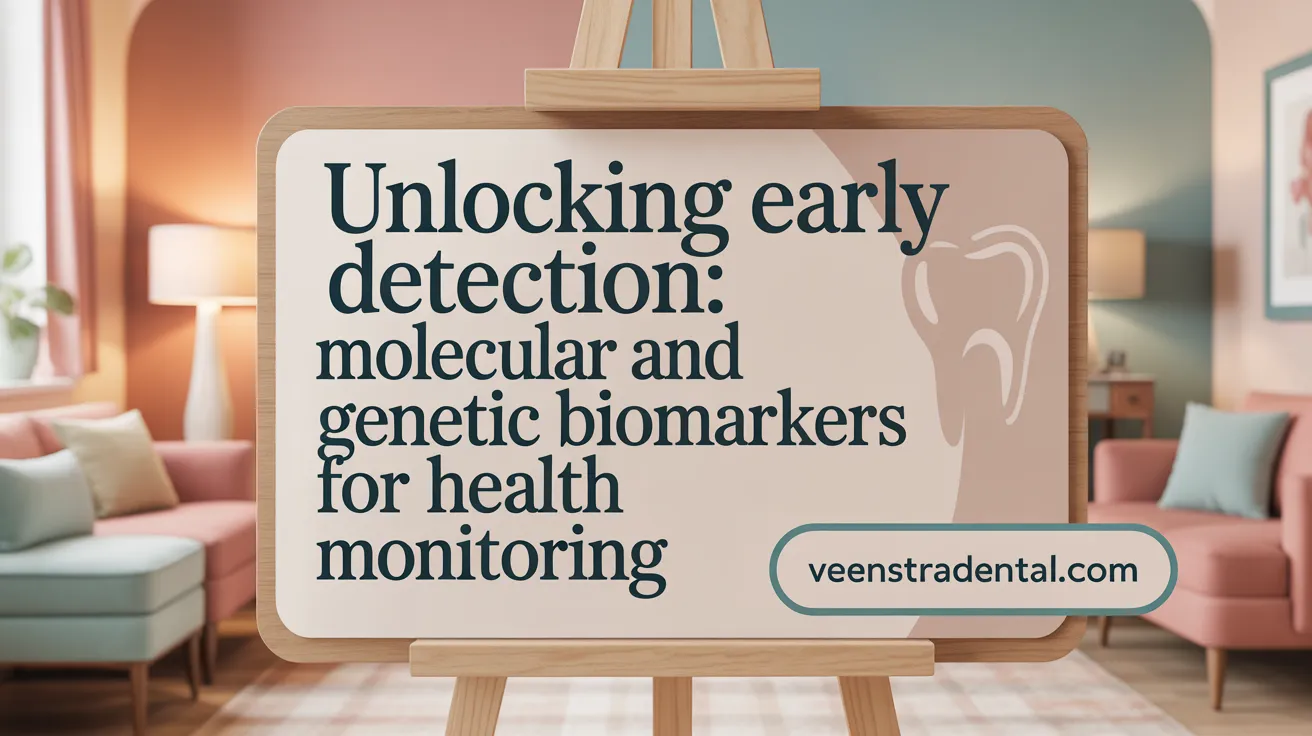
Role of TP53, EGFR, microRNAs, and long non-coding RNAs
Recent advances in molecular biology have identified several genetic markers involved in oral squamous cell carcinoma (OSCC). TP53, often called the "guardian of the genome," shows mutations in a significant portion of oral cancers, which can signal tumor progression. Similarly, epidermal growth factor receptor (EGFR) overexpression is linked to aggressive tumor behavior and poor prognosis.
MicroRNAs (miRNAs) such as miR-21 and miR-31 are small RNA molecules regulating gene expression. Their abnormal levels are associated with OSCC development and may serve as early indicators for malignant transformation. Long non-coding RNAs (lncRNAs), including HOTAIR and MALAT1, are also under investigation for their roles in tumor growth, offering potential as diagnostic targets.
Salivary biomarkers such as MMPs and IL-6
Salivary diagnostics provide a non-invasive method for early detection. Elevated levels of matrix metalloproteinases (MMP-2 and MMP-9) have been associated with tumor invasion and metastasis. Interleukin-6 (IL-6), a cytokine involved in inflammation, is often found at higher concentrations in patients with OSCC, correlating with disease severity and prognosis.
Current limitations and future research directions
Despite promising findings, current molecular and genetic biomarkers face limitations like variability in sensitivity and specificity, and lack of standardized testing protocols. Further large-scale validation studies are necessary to confirm their clinical utility.
Future research is focusing on integrating these biomarkers with advanced imaging and AI-based risk assessment tools to enhance early detection accuracy. Development of portable, easy-to-use diagnostic kits based on saliva and blood samples may revolutionize screening in low-resource settings, ultimately improving patient outcomes.
| Biomarker Type | Example | Diagnostic Potential | Limitations | Future Directions |
|---|---|---|---|---|
| Genetic | TP53, EGFR | Early detection, prognosis | Variability, validation needed | Standardization, integration with AI |
| MicroRNA | miR-21, miR-31 | Early diagnosis, risk stratification | Sensitivity issues | Molecular profiling, personalized therapies |
| LncRNA | HOTAIR, MALAT1 | Tumor progression indicators | Limited clinical adoption | Multi-biomarker panels |
| Salivary | MMP-2, IL-6 | Non-invasive screening | Need for validation | Point-of-care devices |
Use of Risk Prediction Models to Enhance Screening Targeting
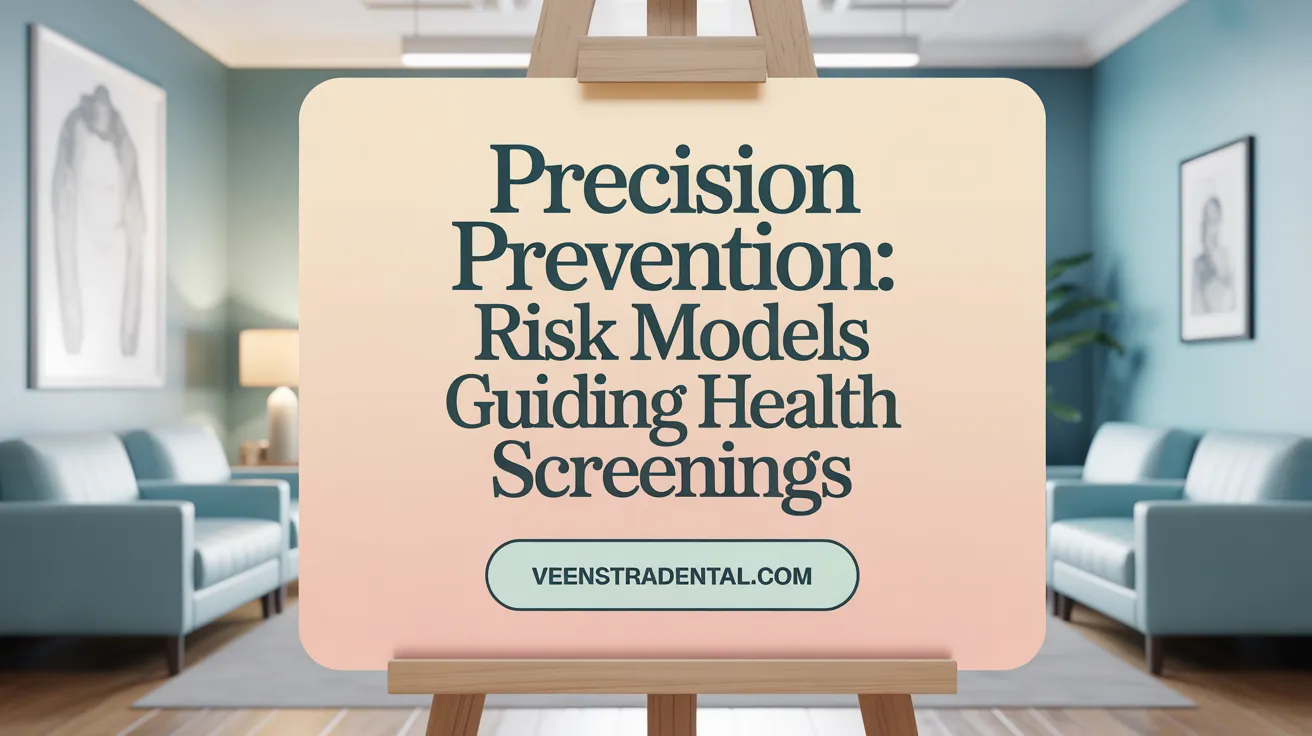
Existing risk models for oral cancer
Several risk prediction models have been developed to identify individuals at heightened risk for developing oral cancer. These models consider factors such as tobacco and alcohol use, age, gender, HPV infection status, dietary habits, and genetic predispositions. By integrating various risk indicators, these tools aim to stratify populations more accurately and prioritize high-risk groups for screening.
Potential to identify high-risk individuals
The main goal of these models is to facilitate early detection by pinpointing those most vulnerable to oral cancer. Targeted screening of high-risk populations can improve detection rates of early, treatable lesions, ultimately reducing mortality. For instance, screening programs in countries like Taiwan and India have shown benefits when focused on tobacco and betel quid users, efficiently allocating resources to those most likely to benefit.
Current challenges in implementing models routinely
Despite promising developments, widespread use of risk prediction models faces several hurdles. These include a lack of standardized, validated tools suitable for diverse populations and resource-limited settings. Additionally, integrating such models into routine dental and primary care practices requires training, technological support, and policy adjustments. Without systematic implementation, these models remain underutilized, limiting their potential to improve screening effectiveness.
Comparative Overview: Oral Cancer Screening Versus Other Cancer Screenings
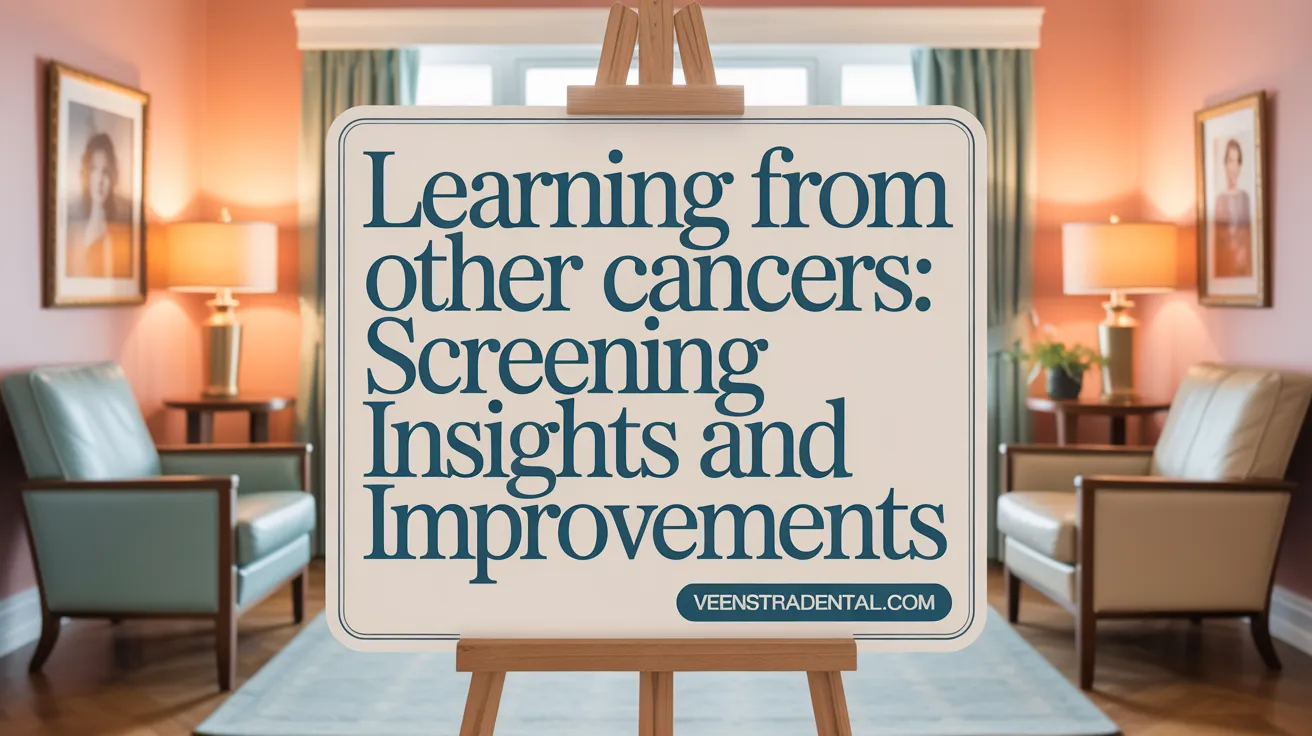
Similarities in mortality reduction challenges
Despite widespread efforts to screen for various cancers, demonstrable reductions in mortality have proven challenging for many screening programs. For oral cancer, large-scale trials like the Kerala Oral Cancer Screening Trial showed an impressive 81% reduction in mortality after multiple screening rounds. In contrast, large trials such as the Cuban program and Taiwanese national screening efforts found limited or modest reductions—around 0.3% and 26%, respectively. These differences highlight the complexity of effectively reducing mortality through screening, which depends heavily on early detection, follow-up treatment, and population compliance.
Meta-analytic findings across cancers such as breast and prostate
Meta-analyses across multiple types of cancers, including breast and prostate, consistently reveal that screening can improve early detection but often does not translate into clear, substantial reductions in overall mortality. For example, mammography screening has improved early diagnosis and stage distribution in breast cancer, but the impact on mortality remains debated. Similarly, prostate-specific antigen testing has raised concerns about overdiagnosis and overtreatment without definitively lowering death rates.
Insights for oral cancer screening advancement
These findings suggest that merely detecting cancers earlier through screening does not automatically result in decreased mortality unless coupled with effective treatment pathways and high participation rates. For oral cancer, visual screening methods are simple and cost-effective but their overall impact on survival remains inconclusive, despite encouraging results in some trials. Future improvements could include integrating advanced technologies like AI, salivary biomarkers, and targeted high-risk group screening. Moreover, strengthening the diagnostic and treatment infrastructure post-screening can substantially enhance outcomes, echoing lessons learned from other cancer screening programs.
| Aspect | Oral Cancer Screening | Other Cancer Screenings | Additional Notes |
|---|---|---|---|
| Primary method | Visual exam, palpation | Mammography, PSA testing | Visual is accessible and inexpensive |
| Sensitivity | Around 84% | Variable | Varies with technology and experience |
| Impact on mortality | Inconsistent, some trials positive | Mixed; often modest | Dependent on follow-up and treatment |
| Cost-effectiveness | Targeted high-risk groups feasible | Cost-benefit debates ongoing | More feasible in high-risk populations |
| Technological tools | Emerging AI, biomarkers | Advanced imaging, molecular testing | Potential to improve accuracy |
Ultimately, while challenges remain, lessons from other cancer screening programs underscore the importance of comprehensive strategies—combining early detection, optimal follow-up care, and technological innovation—to more effectively reduce mortality from oral cancer.
Screening-Related Treatment Delays: Causes and Mitigation Strategies
Evidence of increased treatment delays following screening
Recent studies have indicated that screening programs for oral cancer, while beneficial in early detection, can sometimes lead to increased delays in receiving definitive treatment. For example, data from Taiwan’s national screening program show that patients identified through screening often experience longer wait times before starting treatment. This delay may stem from system bottlenecks or resource limitations that become apparent after a positive screening.
Contributing factors like referral bottlenecks
One of the primary causes of treatment delays is referral bottlenecks within the healthcare system. Once a lesion is identified, patients need to undergo biopsy, diagnosis confirmation, and then be referred to specialized treatment centers. Each step can introduce delays, especially in regions with limited specialist availability or overwhelmed healthcare facilities. Additionally, administrative hurdles and lack of streamlined referral pathways compound these challenges.
Potential interventions to reduce delays
To mitigate treatment delays following screening, several strategies can be implemented. Improving referral pathways with clear protocols helps ensure swift movement from screening to diagnosis and treatment. Enhancing healthcare infrastructure, particularly in rural or underserved areas, is crucial. Training general healthcare workers and dentists to perform prompt biopsies and initial treatments can bridge resource gaps. Moreover, integrating digital health solutions, such as electronic referral systems and telemedicine consultations, can expedite diagnosis and management.
Addressing these delays is vital because timely treatment significantly impacts prognosis and survival rates for oral cancer. Coordinated efforts focused on system efficiency and resource allocation are essential to maximize the benefits of screening programs.
The Prognostic Significance of Early-Stage Oral Cancer Detection
How does early detection of oral cancer influence survival and recurrence outcomes?
Early detection of oral cancer significantly improves patient prognosis. When diagnosed at an early stage, the five-year survival rate can reach approximately 85%, compared to about 50-60% for later stages. Early-stage tumors are usually confined locally, making them more amenable to effective treatment. This early diagnosis not only boosts survival odds but also reduces the likelihood of recurrence. Studies show that patients who undergo screenings and are diagnosed early tend to have lower rates of cancer recurrence due to timely interventions.
What is the relationship between early detection and the need for less invasive treatments?
Detecting oral cancer in its initial phases often means that less aggressive treatment options are sufficient. Early-stage tumors can typically be managed through local surgeries without the need for extensive procedures such as radical neck dissections or chemoradiotherapy. This benefit reduces physical trauma and minimizes side effects. Consequently, patients experience fewer complications related to invasive procedures, leading to better overall health outcomes and smoother recovery processes.
How does early diagnosis improve the quality of life for oral cancer patients?
Patients diagnosed early generally face better functional and aesthetic outcomes. Early treatment preserves more of the oral structures, maintaining speech, swallowing, and aesthetic appearance. Moreover, less invasive treatments translate into shorter hospital stays and quicker return to daily activities. Overall, early detection contributes to a higher quality of life, reducing physical and psychological burdens often associated with advanced cancer therapies.
| Aspect | Impact of Early Detection | Additional Notes |
|---|---|---|
| Survival | Up to 85% five-year survival | Significantly higher than late-stage diagnoses |
| Treatment | Less invasive options | Mainly local excision or minor procedures |
| Quality of Life | Better functional and aesthetic outcomes | Fewer complications and quicker recovery |
Studying the direct influence of early detection underscores its critical role in improving long-term outcomes and patient well-being in oral cancer management.
Population-Wide Versus Targeted Screening: Benefits and Limitations
Efficacy and resource considerations
Implementing oral cancer screening on a large scale involves significant resource allocation and logistical planning. Population-wide screening programs require extensive manpower, equipment, and follow-up facilities, which can strain healthcare systems, especially in low-resource settings. While visual oral examinations are simple and cost-effective, their overall ability to reduce mortality through mass screening remains unproven according to multiple studies and meta-analyses.
Screening high-risk groups versus general populations
Evidence consistently shows that targeting high-risk groups—such as tobacco users, heavy alcohol consumers, and betel quid chewers—results in more effective early detection. These groups have a higher prevalence of oral cancer and potentially malignant lesions, making screening more cost-efficient and impactful. For instance, screening high-risk populations has been associated with earlier-stage detection and reduced overall mortality. Conversely, screening the general population yields lower detection rates and may not be justified financially or practically.
Guideline recommendations
Most national and international guidelines do not endorse population-wide screening due to insufficient evidence of mortality reduction. Instead, they advocate for high-risk group screening as the most feasible approach. This strategy maximizes benefits by focusing limited resources on those most likely to develop the disease, thus improving early detection rates and outcomes. Emerging tools like AI, teledentistry, and molecular biomarkers are promising but still require validation before widespread recommendation.
| Aspect | Population-Wide Screening | Targeted High-Risk Screening | Considerations |
|---|---|---|---|
| Efficacy | Limited evidence of mortality benefit | Improved detection and potential mortality reduction | Resource intensive versus cost-effective for high-risk groups |
| Cost | Higher overall cost | Lower cost per detected case | Resource allocation crucial |
| Practicality | Difficult to implement universally | More feasible in specific settings | Depends on healthcare infrastructure |
| Recommendations | Usually not advised | Recommended for high-risk populations | Based on current evidence and feasibility |
Advances in Imaging and Visualization Tools for Screening

How effective are tools like toluidine blue, autofluorescence, and VELscope in screening?
Modern oral cancer screening incorporates various imaging technologies to improve early detection. Toluidine blue, a vital dye, is used to highlight potentially malignant lesions due to its high sensitivity, but it can yield false positives, limiting specificity. Autofluorescence imaging, such as VELscope, uses the natural fluorescence of oral tissues to identify abnormal areas. This method demonstrates high sensitivity—around 91%—making it effective for lesion detection, though its specificity tends to be lower, approximately 58%, which can increase false-positive rates.
What are the sensitivity and specificity measures of these tools?
Sensitivity indicates the ability of a test to correctly identify those with disease, while specificity measures how well it identifies those without disease. Toluidine blue staining achieves a sensitivity up to 97%, making it a reliable screening aid for malignant changes. Autofluorescence devices like VELscope have demonstrated sensitivities near 92%, but their specificity can be as low as 58%; thus, while useful for ruling out disease, they may produce false alarms.
How are these imaging tools used in clinical practice, and what are their limitations?
These tools are valuable for visual and adjunctive screening during dental or medical examinations. They are quick, non-invasive, and suitable for broad application, including in low-resource settings. However, their limitations include false positives leading to unnecessary biopsies, operator dependency, and the need for confirmatory histopathological diagnosis. Combining visual assessment with these imaging techniques can enhance detection accuracy, but reliance solely on these methods without biopsy can lead to misdiagnosis.
| Tool | Main Purpose | Sensitivity | Specificity | Clinical Notes |
|---|---|---|---|---|
| Toluidine Blue | Highlight suspect lesions | Up to 97% | Variable | High sensitivity; used as an adjunct, not definitive diagnosis |
| Autofluorescence | Detect abnormal tissue fluorescence | ~92% | ~58% | Useful for lesion screening; interpret with caution due to false positives |
| VELscope | Visualize tissue fluorescence | ~92% | 58-60% | Enhances detection; requires trained operator for accuracy |
Ongoing advancements aim to improve the accuracy and usability of these technologies, integrating them into routine oral health screening protocols.
HPV and Its Role in Oral Cancer Screening and Prognosis
How is HPV testing used in oral cancer screening?
HPV testing can be performed using oral rinse samples or serum to help identify potential cases of oral cancer or its precursors. Oral rinse testing detects high-risk HPV DNA directly in the mouth, while serum testing measures HPV-specific antibodies, indicating past or current infection.
What are the sensitivity and specificity of HPV tests?
The sensitivity of HPV testing in oral specimens is moderate, with some methods reporting around 72%, meaning it correctly identifies about 72% of true positive cases. Specificity tends to be higher, often exceeding 90%, such as 92%, indicating it accurately recognizes true negatives.
Is HPV testing effective for early detection?
While promising, HPV testing alone is not sufficient for diagnosis. Its moderate sensitivity means some cases may be missed, but the high specificity helps confirm negative results. Combining HPV testing with other screening tools could enhance overall detection accuracy.
Could HPV testing be integrated into future screening regimes?
Yes, as more evidence emerges, HPV testing might become a part of comprehensive screening strategies, especially in high-risk populations. Advances in molecular diagnostics and biomarkers could improve its sensitivity, making it a valuable non-invasive tool.
What are the potential benefits and limitations?
The main advantage is non-invasiveness and ease of sample collection. However, limitations include its current moderate sensitivity, variability among testing methods, and the need for further validation before widespread implementation.
| Feature | Oral Rinse Testing | Serum Testing |
|---|---|---|
| Sample Type | Saliva or oral rinse | Blood serum |
| Sensitivity | ~72% | Moderate (varies) |
| Specificity | >90% | >90% |
| Ease of Use | Non-invasive | Slightly invasive (blood draw) |
| Current Status | Under research and development | Under research |
In summary, HPV testing holds promise as a supplementary tool for oral cancer screening, with ongoing research aimed at enhancing its accuracy and practical application.
The Potential of Artificial Intelligence to Revolutionize Oral Cancer Detection
How Accurate Are Machine Learning Models in Predicting Oral Cancer?
Artificial intelligence (AI) and machine learning (ML) are increasingly being explored for their ability to improve early detection of oral cancer. Current models can predict patients' risk with an accuracy of up to 80%, assisting clinicians in identifying high-risk individuals more reliably.
ML algorithms analyze large sets of data, including clinical history, demographic details, and lesion images, to generate risk assessments. These tools have shown promising results in improving diagnostic efficiency, especially when visual examination alone is insufficient.
How Can AI Be Combined with Imaging and Clinical Data?
AI enhances oral cancer screening by integrating various types of data, such as images from enhanced visualization techniques—like VELscope, fluorescence imaging, and optical coherence tomography—and clinical examination findings.
This multimodal approach helps in distinguishing benign from suspicious lesions, improving the sensitivity and specificity of screenings. For example, AI algorithms can analyze real-time images from optical devices and flag potential malignancies for further examination.
Combining AI with salivary biomarkers and genetic data is also an emerging area, potentially offering a more comprehensive risk profile for each patient.
What Are the Challenges and Opportunities?
Despite its potential, integrating AI into routine oral cancer screening faces several challenges. Limited access to large, annotated datasets hampers training robust models. Variations in image quality, differences in population risk factors, and lack of standardized protocols pose additional hurdles.
However, the opportunities are significant. AI can expand screening reach into underserved areas via tele-dentistry, facilitate early detection, and assist non-specialist healthcare workers in identifying suspicious lesions.
Continuous advancements in machine learning, combined with developing user-friendly platforms, promise to make AI an integral part of future oral cancer screening programs. Addressing current barriers will be crucial to translating this potential into widespread clinical practice.
Future Directions and Research Priorities in Oral Cancer Screening
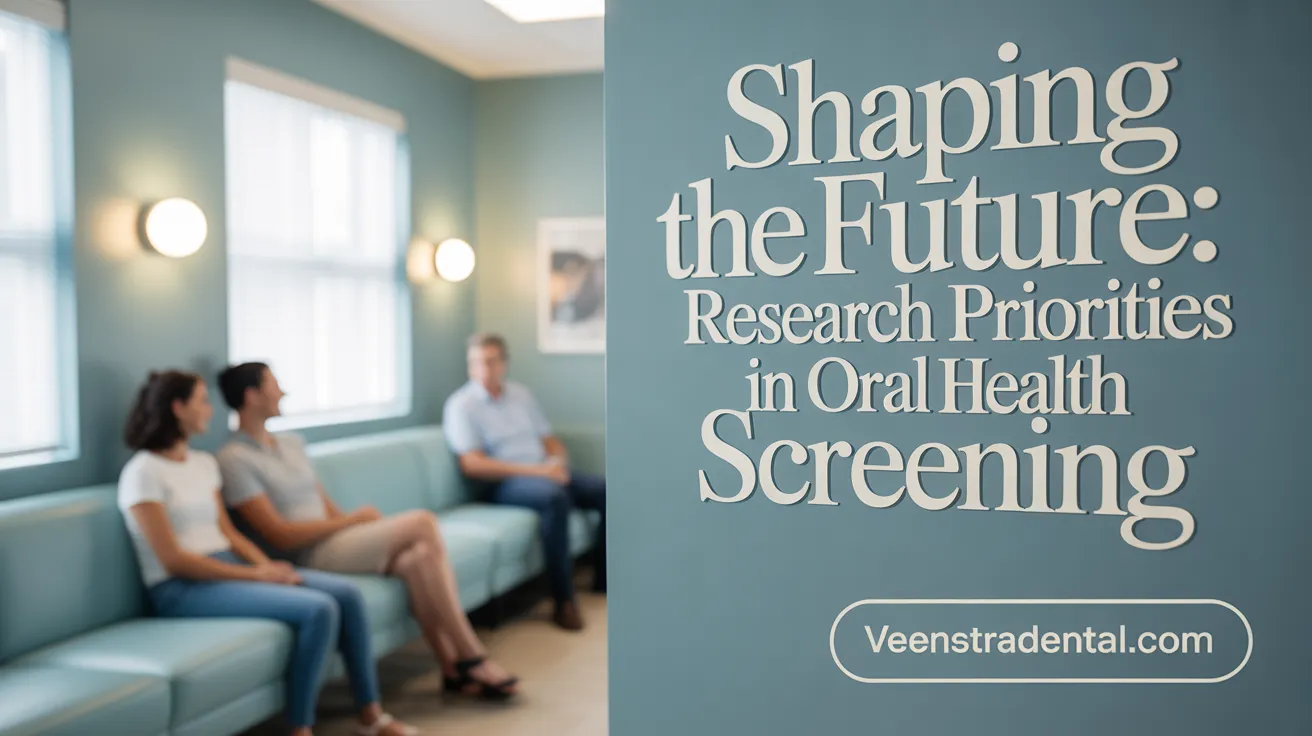
Development of non-invasive and AI-enabled technologies
Advances in technology are paving the way for more effective oral cancer screening methods. Non-invasive tools such as saliva-based diagnostics, optical coherence tomography, and fluorescence imaging show promising results in early detection. Artificial Intelligence (AI) and machine learning models are increasingly being integrated into screening processes to enhance accuracy in identifying suspicious lesions and assessing patient risk. These innovations aim to make screening more accessible, especially in remote or underserved areas, and reduce the reliance on traditional visual examinations.
Validation of biomarkers and risk models
Ongoing research into biomarkers, such as salivary proteins and genetic markers, is critical for refining early detection strategies. Molecules like MMP-2, MMP-9, cyfra 21-1, and interleukin 6 are under investigation for their potential to distinguish malignant from benign lesions. Similarly, genetic and molecular markers like TP53, EGFR, and specific microRNAs provide insights into carcinogenesis and could serve as diagnostic tools or targets for personalized therapy. Validating these biomarkers and integrating them into risk prediction models can facilitate targeted screening, especially for high-risk populations.
Enhancement of training and awareness
The effectiveness of screening programs heavily depends on the competence of healthcare providers, particularly general dentists and primary care workers. Improving their training in lesion detection and risk assessment, along with raising societal awareness about oral cancer, can improve early presentation and diagnosis. Educational initiatives should emphasize the importance of routine examinations and self-awareness among at-risk groups such as tobacco and alcohol users.
Optimization of screening frequency and adherence
Current evidence indicates that repeated screenings can significantly improve detection rates and survival outcomes. Establishing optimal screening intervals tailored to individual risk levels and ensuring patient adherence are vital for success. Strategies to overcome barriers like lack of access, awareness, and follow-up are essential, as they directly impact the mortality benefits of screening programs.
In summary, future research should focus on harnessing technological innovations, validating reliable biomarkers, enhancing training programs, and optimizing screening strategies to effectively reduce oral cancer mortality.
Summary and Outlook on Oral Cancer Screening Impact
The available evidence clearly demonstrates that oral cancer screening, especially when targeted at high-risk populations, enhances early detection, shifts diagnosis toward less advanced stages, and improves treatment outcomes and survival rates. While visual examination remains the cornerstone of screening due to its simplicity and cost-effectiveness, integration of advanced diagnostic technologies such as imaging modalities, molecular biomarkers, and artificial intelligence holds considerable promise to elevate diagnostic accuracy further. Large clinical trials and observational studies reveal reductions in mortality and late-stage diagnoses with sustained screening efforts, though challenges remain, including treatment delays post-screening and variability in program adherence. Cost-effectiveness analyses advocate targeted screening over population-wide strategies, emphasizing feasibility in resource-limited settings. Addressing barriers such as healthcare infrastructure deficits and enhancing training for primary healthcare providers are critical to maximize screening benefits. Ongoing research focusing on technological innovation, risk stratification, and integrated healthcare models is essential to refine oral cancer screening approaches. Ultimately, widespread implementation of effective screening programs, combined with public education and preventive measures, will be pivotal in reducing the global burden of oral cancer and improving patient outcomes worldwide.
References
- Estimating the Benefits of Oral Cancer Screening
- Oral Cancer Screening: Past, Present, and Future - PMC
- Methods, Detection Rates, and Survival Outcomes of ...
- Assessment of screening programs as a strategy for early ...
- Advancing Oral Cancer Detection and Prevention
- The Power Of Oral Cancer Screening: Early Detection ...
- Oral Cancer Screening: Insights into Epidemiology, Risk ...
- Can oral cancer screening reduce late-stage diagnosis ...
